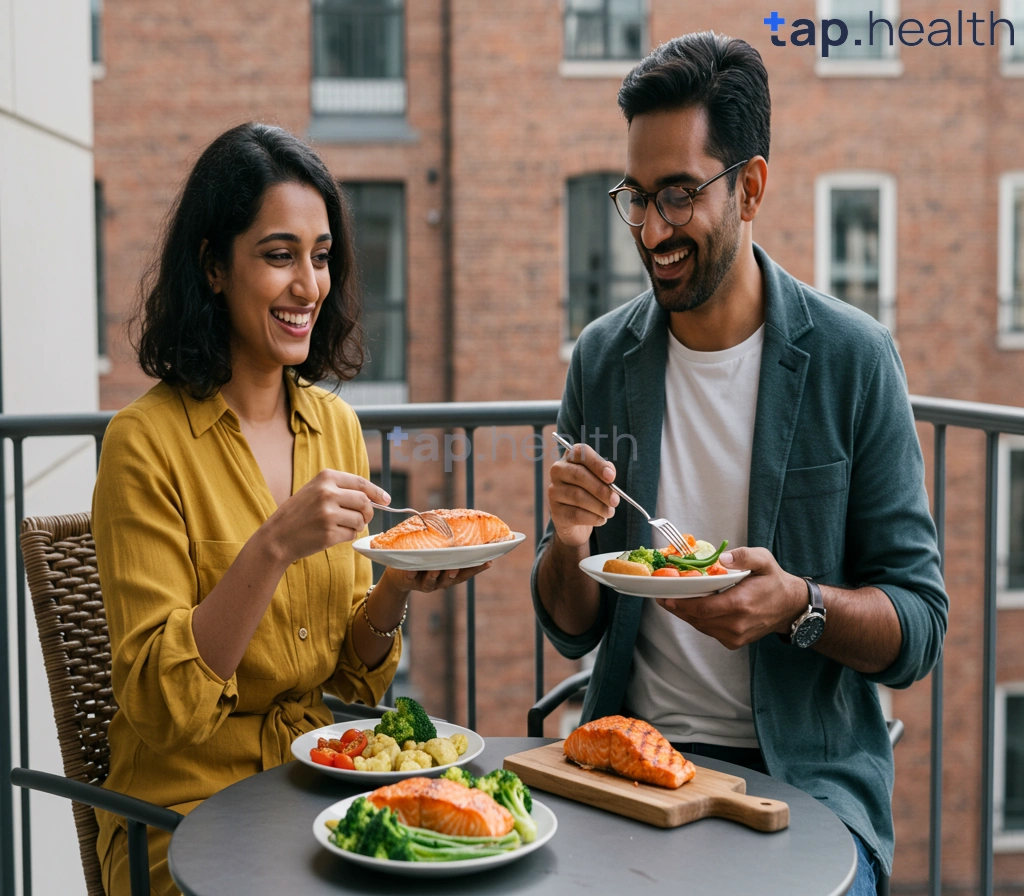Table of Contents
- Grilled Salmon Recipe: Diabetes-Friendly & Delicious
- Healthy Grilled Salmon: A Simple Diabetes Meal Plan
- How to Grill Salmon: Tasty, Diabetic-Friendly Guide
- Best Grilled Salmon for Diabetics: Flavorful & Low-Carb
- Is Grilled Salmon Good for Diabetes? Nutrition Facts & Recipe
- Frequently Asked Questions
- References
Tired of bland, boring meals that leave you feeling unsatisfied? Craving a delicious and healthy dinner that won’t spike your blood sugar? Then you’ve come to the right place! This blog post is all about Grilled Salmon: A Delicious & Diabetes-Friendly Recipe, a flavorful and nutritious dish perfect for managing your diabetes without sacrificing taste. We’ll walk you through a simple, step-by-step recipe, highlighting how to prepare this amazing meal, ensuring it fits seamlessly into a healthy eating plan. Get ready to discover a new favorite!
Grilled Salmon Recipe: Diabetes-Friendly & Delicious
Did you know women with diabetes face a 40% higher risk of heart disease than men with diabetes? Prioritizing heart-healthy meals is crucial, and grilled salmon is an excellent choice. This recipe offers a delicious and diabetes-friendly way to incorporate this nutrient-rich fish into your diet, particularly beneficial in hot and humid Indian and tropical climates where lighter meals are often preferred.
Preparing Your Salmon for Grilling
Start by choosing fresh, high-quality salmon fillets. Indian markets often offer a variety of fresh seafood, so look for firm, moist fillets with a bright pink hue. Pat them dry with paper towels before grilling to ensure even cooking. Marinate your salmon for at least 30 minutes in a mixture of lemon juice, ginger, garlic, and a touch of your favorite spices. Turmeric, a common spice in Indian cuisine, adds flavor and has anti-inflammatory properties.
Grilling Your Salmon to Perfection
Preheat your grill to medium-high heat. Lightly oil the grill grates to prevent sticking. Place the salmon fillets on the grill and cook for about 4-6 minutes per side, or until the fish is cooked through and flakes easily with a fork. Be mindful not to overcook, as this can make the salmon dry. Remember that cooking times may vary slightly depending on the thickness of your fillets and the heat of your grill.
Serving Suggestions
Serve your grilled salmon with a side of steamed vegetables like broccoli or green beans for a complete and balanced meal. A light salad with a lemon vinaigrette also complements the salmon beautifully. This recipe is a great way to manage blood sugar levels while enjoying a flavorful, satisfying meal, particularly important in the warmer months prevalent in Indian and tropical regions. Enjoy! For more ideas on creating delicious and diabetes-friendly meals, especially for special occasions, check out our blog on Creating Diabetes-Friendly Dishes for the Holidays. And if you’re curious about other diabetes-friendly grilling options, you might find our article on Can Diabetics Eat Grilled Cheese Sandwiches? helpful.
Healthy Grilled Salmon: A Simple Diabetes Meal Plan
Managing diabetes in hot and humid climates like those found in many Indian and tropical countries requires careful attention to diet. Maintaining blood sugar levels within a healthy range is crucial, and incorporating delicious, yet manageable meals is key. This recipe focuses on grilled salmon, a lean protein packed with omega-3 fatty acids, offering numerous health benefits. A balanced meal, including salmon, typically aims for around 45–60 grams of carbohydrates, depending on individual needs and prescribed dietary plans. Always consult your doctor or a registered dietitian to determine your personalized carbohydrate target.
Choosing Your Sides: A Tropical Twist
To complement your grilled salmon, consider incorporating fresh, seasonal vegetables readily available in Indian and tropical regions. Think vibrant stir-fries featuring okra, spinach, or bitter gourd – all relatively low in carbohydrates and bursting with flavor. Alternatively, a small portion of brown rice (carefully measured to stay within your daily carb allowance) or a mixed green salad with a light vinaigrette can complete your meal. Remember, portion control is essential for managing blood sugar levels effectively. Avoid heavy, creamy sauces which can significantly increase the overall carbohydrate content of your meal. For more ideas on foods that support a healthy diabetes diet, check out 20 Best Foods for People with Diabetes – Tap Health.
Grilling to Perfection: Simple Steps
Grilling salmon is straightforward. Marinate your salmon fillets (about 4-6 ounces) in a mixture of lemon juice, ginger, garlic, and your favorite spices. This adds flavor and tenderizes the fish. Grill over medium heat for about 4-6 minutes per side, or until cooked through. The result? A delicious, healthy, and diabetes-friendly meal that’s perfect for the warmer climates of India and other tropical regions.
Enjoy Your Healthy Meal!
This recipe offers a simple, flavorful, and diabetes-friendly meal option easily adaptable to the fresh produce found across India and other tropical countries. Remember to always monitor your blood sugar levels and adjust your portion sizes accordingly. If you’re looking to incorporate this meal plan into a broader weight loss strategy, you might find our guide on How to Lose Weight with Diabetes Diet Plan helpful. Enjoy your healthy and delicious grilled salmon!
How to Grill Salmon: Tasty, Diabetic-Friendly Guide
Grilled salmon is a fantastic choice for a healthy and delicious meal, especially for those managing diabetes. Studies show that smokers with diabetes face a doubled mortality risk from cardiovascular issues, highlighting the importance of a heart-healthy diet. Choosing lean protein sources like salmon, rich in Omega-3 fatty acids, is crucial. This recipe focuses on simple grilling techniques perfect for the Indian and tropical climates.
Preparing Your Salmon
Start by selecting fresh salmon fillets, preferably wild-caught. Marinate the salmon for at least 30 minutes in a mixture of lemon juice, ginger, garlic, and a touch of Indian spices like turmeric and cumin. These spices not only add flavour but also offer potential health benefits. Remember to keep the marinade light to avoid excess sodium, a factor to consider for those with diabetes.
Grilling Techniques for Perfect Salmon
For tropical climates, avoid grilling during peak sun hours to prevent overcooking. Pre-heat your grill to medium heat. Lightly oil the grates to prevent sticking. Grill the salmon for approximately 4-6 minutes per side, or until cooked through and flaky. Use a meat thermometer to ensure the internal temperature reaches 145°F (63°C) for food safety. Remember to adjust cooking time based on the thickness of your fillets.
Serving Your Delicious Salmon
Serve your grilled salmon with a side of steamed vegetables like broccoli or green beans for a complete and balanced diabetic-friendly meal. Consider serving with a light, flavorful sauce, like a cilantro-lime dressing, to enhance the taste without adding excessive calories or sugar. For a truly regional touch, serve with a side of brown rice or quinoa, common staples in many Indian and tropical cuisines. Choosing the right seafood is important, so if you’re wondering What Seafood is Bad for Diabetics, it’s best to consult a doctor or dietitian.
Enjoy Your Healthy Meal!
Enjoy this simple, delicious, and diabetes-friendly grilled salmon recipe. Maintaining a healthy diet is key to managing diabetes, especially in hot and humid climates where hydration is paramount. Remember to consult your doctor or a registered dietitian for personalized dietary advice. While this recipe focuses on salmon, you might also be interested in exploring other options; for instance, Can a Diabetic Eat Grilled Cheese? is a question many people ask.
Best Grilled Salmon for Diabetics: Flavorful & Low-Carb
Maintaining healthy blood sugar levels is crucial, especially in regions like India and other tropical countries where dietary habits can significantly impact diabetes prevalence. Remember, a blood sugar level of less than 140 mg/dL is considered normal, while levels between 140–199 mg/dL suggest prediabetes, and 200 mg/dL or higher indicates diabetes. Grilled salmon offers a delicious and effective way to manage your blood sugar. Its lean protein content helps regulate insulin levels, while being naturally low in carbohydrates – a key factor in controlling blood glucose.
Why Choose Grilled Salmon?
Salmon is packed with omega-3 fatty acids, known to improve insulin sensitivity. This means your body uses insulin more effectively, helping to keep your blood sugar within a healthy range. Grilling, as opposed to frying, keeps the dish low in unhealthy fats, further supporting diabetes management. Many Indian and tropical recipes incorporate flavorful spices and herbs, easily adaptable to create delicious and healthy grilled salmon dishes. Think of vibrant marinades using turmeric, ginger, garlic, and lemon – all beneficial additions to a diabetes-friendly diet. Choosing the right snacks is also important, and you might wonder Can a Diabetic Eat Goldfish? The answer, as with many foods, depends on portion control and the overall diet.
Tips for Grilling Diabetes-Friendly Salmon
Portion control is vital. A serving of around 4-6 ounces is usually sufficient. Avoid adding excessive amounts of sugary sauces or marinades. Instead, focus on fresh herbs, spices, and a squeeze of lime or lemon for flavor. Remember to check your blood sugar levels regularly, especially after incorporating new foods into your diet. Consult with your doctor or a registered dietitian for personalized dietary advice.
Delicious and Convenient
Grilled salmon is a versatile and convenient option for busy individuals in India and tropical countries. It can be easily prepared at home or purchased from many restaurants offering healthy meal options. Embrace this delicious, healthy protein source as part of a balanced diet to help manage your blood sugar levels and improve your overall well-being. Enjoy a flavorful and healthy meal! For other healthy options, you might also consider exploring Is Sushi Good for Diabetics? It’s important to make informed choices about all aspects of your diet.
Is Grilled Salmon Good for Diabetes? Nutrition Facts & Recipe
Why Choose Grilled Salmon for Diabetes Management?
Managing diabetes largely depends on making smart food choices that help control blood sugar. For example, research shows that drinking sugary beverages daily can increase diabetes risk by 26%. This highlights why replacing high-carb or high-fat foods with healthier options is so important.
Grilled salmon is one of the best diabetes-friendly choices. It’s a lean protein loaded with omega-3 fatty acids, which are linked to:
-
Better insulin sensitivity
-
Lower inflammation
-
Improved heart health
For people with diabetes, these benefits play a big role in managing blood sugar and reducing long-term complications. Compared to fried foods or carb-heavy traditional meals often found in Indian and tropical diets, grilled salmon is a lighter, healthier, and equally tasty alternative.
Nutritional Benefits of Grilled Salmon
Salmon is packed with nutrients that support diabetes management:
-
Protein-rich – Helps you stay full longer, supports muscle health, and prevents blood sugar spikes.
-
Omega-3 fatty acids – Fight inflammation and improve insulin response.
-
Vitamin D – Important for bone health, and often deficient even in sunny regions like India.
-
Low in unhealthy fats – Unlike fried foods, grilling keeps salmon light and heart-friendly.
👉 Pro tip: Enhance the health benefits by marinating salmon with Indian spices like turmeric, ginger, or garlic, which add flavor and provide natural anti-inflammatory effects.
Simple & Diabetes-Friendly Grilled Salmon Recipe
Here’s an easy way to prepare a healthy salmon meal at home:
Ingredients (serves 2):
-
2 salmon fillets (150g each)
-
2 tbsp lemon juice
-
1 tbsp olive oil
-
½ tsp turmeric or ginger (optional)
-
Salt and black pepper to taste
Method:
-
Marinate the salmon fillets with lemon juice, olive oil, spices, salt, and pepper for at least 30 minutes.
-
Preheat your grill or pan to medium heat.
-
Grill salmon for 4–5 minutes per side, or until cooked through.
-
Serve with a side of steamed vegetables like broccoli, spinach, or green beans for a complete diabetes-friendly meal.
👉 Adjust portion sizes according to your personal diet plan. Always consult your doctor or dietitian before making major dietary changes.
Key Takeaway
Yes, grilled salmon is excellent for diabetes management. It’s tasty, filling, and loaded with nutrients that help keep blood sugar in check. By adding locally available spices and pairing it with non-starchy vegetables, you get a meal that’s both healthy and satisfying.
Frequently Asked Questions
Q1. Is grilled salmon good for people with diabetes?
Yes, grilled salmon is a diabetes-friendly option because it’s rich in omega-3 fatty acids, which help improve insulin sensitivity and reduce inflammation. It’s also a good source of protein and vitamin D, both beneficial for managing diabetes.
Q2. How long does it take to grill salmon?
Grilling time depends on the thickness of the fillet, but generally, it takes about 4-6 minutes per side.
Q3. What are some healthy ways to serve grilled salmon?
To create a well-balanced and diabetes-friendly meal, pair your grilled salmon with steamed vegetables and a light salad. Portion control is key.
Q4. What is the recommended serving size of grilled salmon for people with diabetes?
A recommended serving size is around 4-6 ounces. Always consult your doctor or a registered dietitian for personalized dietary advice.
Q5. Are there any potential downsides or things I should be aware of when eating grilled salmon?
While salmon offers many health benefits, it’s important to practice portion control to manage blood sugar levels. Also, always consult a healthcare professional or registered dietitian for personalized dietary advice tailored to your specific needs and health conditions.
References
- A Practical Guide to Integrated Type 2 Diabetes Care: https://www.hse.ie/eng/services/list/2/primarycare/east-coast-diabetes-service/management-of-type-2-diabetes/diabetes-and-pregnancy/icgp-guide-to-integrated-type-2.pdf
- What is Diabetes: https://www.medschool.lsuhsc.edu/genetics/docs/DIABETES.pdf



